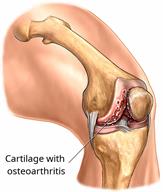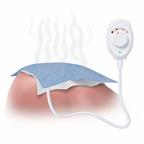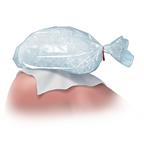Osteoarthritis

Osteoarthritis is a type of arthritis. It refers to joint pain or joint disease. Osteoarthritis affects tissue that covers the ends of bones in joints (cartilage). Cartilage acts as a cushion between the bones and helps them move smoothly. Osteoarthritis occurs when cartilage in the joints gets worn down. Osteoarthritis is sometimes called "wear and tear" arthritis.
Osteoarthritis is the most common form of arthritis. It often occurs in older people. It is a condition that gets worse over time. The joints most often affected by this condition are in the fingers, toes, hips, knees, and spine, including the neck and lower back.
What are the causes?
This condition is caused by the wearing down of cartilage that covers the ends of bones.
What increases the risk?
The following factors may make you more likely to develop this condition:
What are the signs or symptoms?
The main symptoms of this condition are pain, swelling, and stiffness in the joint. Other symptoms may include:
An enlarged joint.
More pain and further damage caused by small pieces of bone or cartilage that break off and float inside of the joint.
Small deposits of bone (osteophytes) that grow on the edges of the joint.
A grating or scraping feeling inside the joint when you move it.
Popping or creaking sounds when you move.
Difficulty walking or exercising.
An inability to grip items, twist your hand, or control the movements of your hands and fingers.
How is this diagnosed?
This condition may be diagnosed based on:
How is this treated?
There is no cure for this condition, but treatment can help control pain and improve joint function. Treatment may include a combination of therapies, such as:
- Pain relief techniques, such as:
- Medicines for pain and inflammation. The medicines can be taken by mouth or applied to the skin. They include:
NSAIDs, such as ibuprofen.
Prescription medicines.
Strong anti-inflammatory medicines (corticosteroids).
Certain nutritional supplements.
A prescribed exercise program. You may work with a physical therapist.
Assistive devices, such as a brace, wrap, splint, specialized glove, or cane.
A weight control plan.
- Surgery, such as:
An osteotomy. This is done to reposition the bones and relieve pain or to remove loose pieces of bone and cartilage.
Joint replacement surgery. You may need this surgery if you have advanced osteoarthritis.
Follow these instructions at home:
Activity
Managing pain, stiffness, and swelling
- If told, apply heat to the affected area as often as told by your provider. Use the heat source that your provider recommends, such as a moist heat pack or a heating pad.
If you have a removable assistive device, remove it as told by your provider.
Place a towel between your skin and the heat source. If your provider tells you to keep the assistive device on while you apply heat, place a towel between the assistive device and the heat source.
Leave the heat on for 20–30 minutes.
- If told, put ice on the affected area.
If you have a removable assistive device, remove it as told by your provider.
Put ice in a plastic bag.
Place a towel between your skin and the bag. If your provider tells you to keep the assistive device on during icing, place a towel between the assistive device and the bag.
Leave the ice on for 20 minutes, 2–3 times a day.
-
If your skin turns bright red, remove the ice or heat right away to prevent skin damage. The risk of damage is higher if you cannot feel pain, heat, or cold.
-
Move your fingers or toes often to reduce stiffness and swelling.
-
Raise (elevate) the affected area above the level of your heart while you are sitting or lying down.
General instructions
-
Take over-the-counter and prescription medicines only as told by your provider.
-
Maintain a healthy weight. Follow instructions from your provider for weight control.
-
Do not use any products that contain nicotine or tobacco. These products include cigarettes, chewing tobacco, and vaping devices, such as e-cigarettes. If you need help quitting, ask your provider.
-
Use assistive devices as told by your provider.
-
National Institute of Arthritis and Musculoskeletal and Skin Diseases:
niams.nih.gov
-
-
Contact a health care provider if:
-
You have redness, swelling, or a feeling of warmth in a joint that gets worse.
-
You have a fever along with joint or muscle aches.
-
You develop a rash.
-
You have trouble doing your normal activities.
-
You have pain that gets worse and is not relieved by pain medicine.
This information is not intended to replace advice given to you by your health care provider. Make sure you discuss any questions you have with your health care provider.


